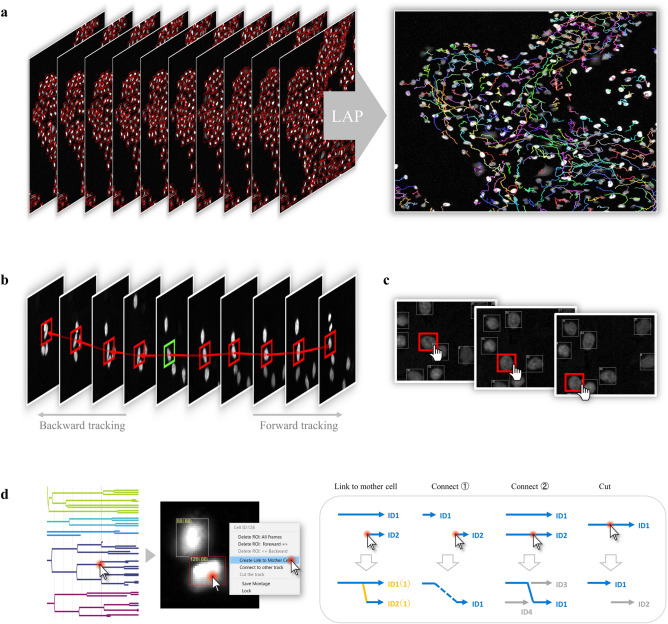Figure 2.
Tracking methods and editing function. (a) Overview of the link-type tracking method. First, all image frames are subjected to a recognition process to determine the position and shape of the target, and then ROIs are generated. Then, trajectories are generated by linking ROIs that are determined to be identical between adjacent frames. (b) Overview of the sequential tracking method. For a user-selected ROI (indicated by the green), the target region for each frame is searched sequentially based on pattern matching to identify the destination location. Time-series forward tracking as well as backward tracking is possible. (c) Overview of manual tracking. It is possible to perform manual tracking and generate trajectories for selected ROIs at any timepoint. (d) Overview of the trajectory editing function. By clicking on a point of interest in the cell lineage, the corresponding frame image and ROI are instantly displayed. The user can visually check the positional relationship between the source and target ROIs on the image, and modify the trajectory (link relationship between ROIs) with a simple mouse operation.

